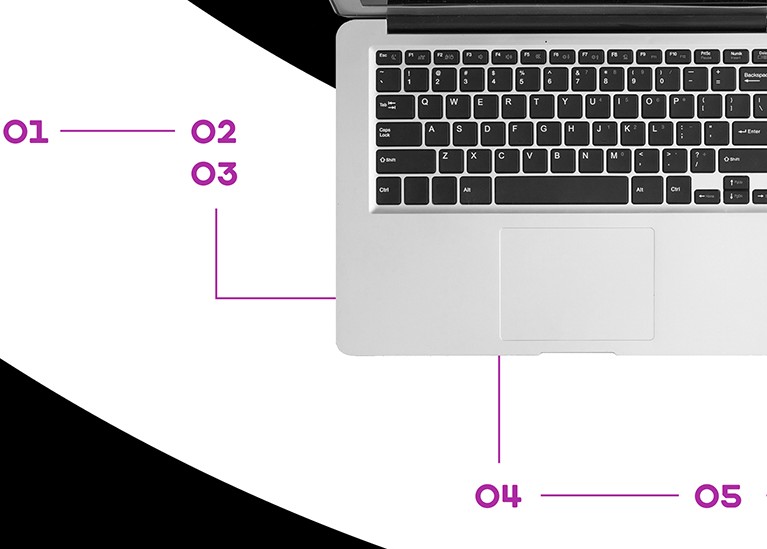Knowing the difference between omnichannel and multichannel can be the difference between good sales and skyrocketing growth. After a year that saw the largest shifts in purchasing habits in perhaps the last decade, how do you make sure you’re creating marketing campaigns that aren’t just well rounded, but effective strategies that work? Below we take another look at what omni and multichannel marketing is, and what it looks like in 2021.
All versus the many
In our previous blog we showed it was about depth: multi-channel equals ‘many’ while omni-channel equals ‘all’. Multichannel is the simple process of having an interaction on a number of different channels - but each channel generally operates in isolation. Omnichannel looks at how all channels can work in synergy to deliver moviegoers a seamless experience that will in turn build stronger brand loyalty and recognition. It’s ultimate goal is to increase the moviegoers comfort and place them at the center of the brand experience. For Cinema and Studio marketers this means creating a consistent experience throughout their email marketing, social media, apps and in-theatre touch points.
2021 landscape
So what does this mean after the changes we’ve seen be triggered by a pandemic? It means putting your moviegoer at the centre more than ever before, and considering if or how their shopping habits might have altered. Recognising that it may no longer be about adding more channels because they’re popular, but about understanding your customer and where they are.
Data collection and analysis is essential in the success of omnichannel retail, this could include collection from a membership programme, integrating your online and offline channels, customer service (perhaps a chatbot), email marketing, social media, the list goes on. The biggest advantage is integrating these and analysing your moviegoers preferences and behaviours; this is how you optimise and continue to improve their experience. Eg.
- Recognising that one customer prefers to come into a theatre, purchase their tickets and dine-in before their film begins;
- While another only orders through your app, they like to choose the best seats, keep track of their loyalty points and see if they can apply any before they click confirm.
This in turn doesn’t just improve your moviegoers experience alone. It’s been proven that companies that have better omnichannel strategies retain on average 89% of their customers, compared to 33% for companies that have little to no omnichannel customer engagement. Along with the fact that 68% of millennials prefer (demand) the convenience of an omnichannel approach when they shop.
Getting trendy
Below are a few trends that are emerging and perhaps worth considering when looking at an omnichannel approach.
Multi-channel attribution
Attribution makes social selling with an omnichannel approach possible. As marketers we need confirmation or verification that campaigns result in ticket purchases or sales. If you sell on multiple channels you need the analytics that will give you a holistic view of your customers journey.
A greater emphasis on community
I don’t think it’s a surprise to anyone that a moviegoer will seek a sense of community from their local cinema. In terms of an omnichannel approach it’s important to minimise distance between cinema and moviegoer. Social distance is a good idea, but logistical distance is another matter.
Making your moviegoers feel more connected could mean you ask for their opinions in online email or social campaigns, their favourite films, favourite quotes, celebrate their theatrical experiences with them.
Applying customer data offline
We need to remember that digital habits still apply when shopping offline. We know that often customers will research a product online before purchasing. But increasingly, customers apply the same logic to their offline experience. Google reports that 59% of customers want to Google a product even before making an offline purchase. This could mean they’re looking up a film trailer, reviews, a synopsis or ticket prices before they decide to see a film in cinema.
Touch points and contactless transactions
In one survey, 67% of respondents said they would most likely continue using curbside pickup even after the pandemic. This is more than just an indication of one trend; it presents an interesting shift in buyer psychology.
Interestingly not that long ago, the average consumer only needed two touch points when buying a product. These days, the average is six.
In summary
Our industry is still a really prime environment for omnichannel success. The way people experience cinema is constantly evolving, and it’s safe to say some elements are now forever changed. Going forward, pay close attention to your moviegoers and the journey they take before purchasing, where their main touchpoints are, where they like to purchase and how you can make each experience the best it can be. In this story, offer your moviegoer the lead role.
If you would like some more information or are looking to improve your current omnichannel approach contact us to find out how we can help.




